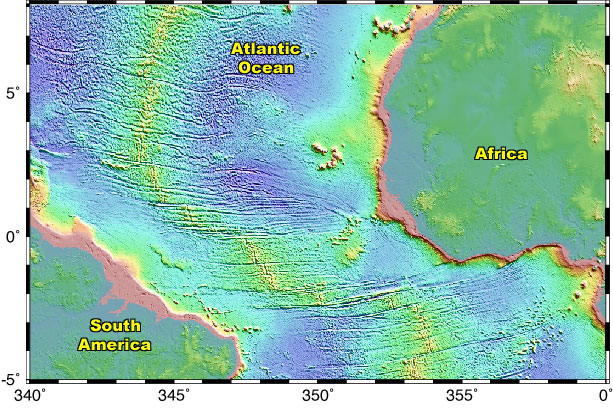|
The Theory of Plate Tectonics (1) The Ocean Floor  | | A large-scale view of the Mid-Atlantic Ridge. Numerous transform faults can be seen running almost perpendicular along this mid-ocean spreading center. |
As yet, only a small amount of the ocean floors have been mapped. Although two thirds of the Earth's surface lies beneath the oceans, proper mapping instruments had not been readily available until recently. In fact, until the mid 1900's Navy ships did the only mapping using echo-sounding devices, while in route from place to place. One of the first discoveries made by the Navy's echo-sounding extensive devices was the evidence of underwater mountains. A group of these mountains were found, for example, in the Atlantic Ocean and later named the Mid-Atlantic Ridge. Due to modern tools and dedicated marine geologists, we now know that the ocean floors are more dynamic and rugged than previously thought.
Marine geology research began in the 1950's and was conducted by multiple nations, led to the discovery of a great mountain chain that virtually wraps around the Earth. This global mountain range is called the "global mid-ocean ridge". This ridge, which zig-zags in between continents is of enormous height so that, by comparison, it towers over all mountains in the United States, with exception of Mount McKinley in Alaska (6,194 m). This ridge, albeit underwater, is the most prominent topographic feature on our planet.
|







